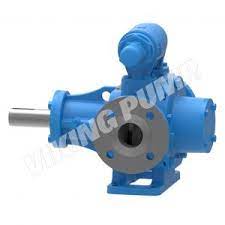
We are continuing on with our series of ‘Know Your Pump’ so that you better know your way around the world of Positive Displacement pumps. Today we are looking at Vane Pumps.
Vane pumps have a rotor with radial slots, which are positioned off-center in a housing bore. Vanes that fit closely in the rotor slots slide in and out as the rotor turns. Vane action is aided by centrifugal force, hydraulic pressure, or push-rods. Pumping action is caused by the expanding and contracting volumes contained by the rotor, vanes, and housing. Vanes are the main sealing element between the suction and discharge ports and are usually made of a non-metallic composite material. Rotor bushings run in the pumped liquid or are isolated by seals.
A vane pump usually operates between 1,000 rpm and 1,750 rpm. The pumps work well with low-viscosity liquids that easily fill the cavities and provide good suction characteristics.
Speeds must be reduced dramatically for high-viscosity applications to load the area underneath the vanes. These applications require stronger-than-normal vane material.
Because there is no metal-to-metal contact, these pumps are frequently used with low-viscosity non-lubricating liquids such as propane or solvent. This type of pump has better dry priming capability than other PD pumps.
Abrasive applications require the proper selection of vane material and seals. Vane pumps have fixed end clearances on both sides of the rotor and vanes similar to external gear pumps. Once wear occurs, this clearance cannot be adjusted, but some manufacturers supply replaceable or reversible end plates. Casing liners are a low-cost way of restoring pump performance as wear occurs.
What do we use them for?
Vane pumps are designed to handle low viscosity liquids such as LP gas (propane), ammonia, solvents, alcohol, fuel oils, gasoline, and refrigerants. They can be used to pump liquids with viscosities up to 500 cPs / 2,300 SSU.
Vane pumps are able to handle a wide range of fluid temperatures. -25°F and 500°F making them useful in a variety of applications.
| Abrasives
|
Thin
Liquids |
Viscous Liquids | Solids | Dry Prime | Diff. Pressure | |
| How well does a Vane Pump handle it? |
P |
E |
A |
P |
G |
A |
E = Excellent, G = Good, A = Average, P = Poor


